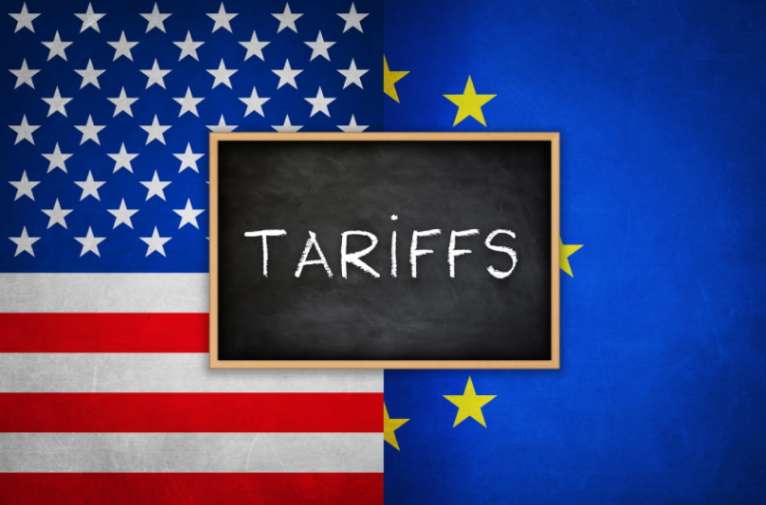Trump's reciprocal tariffs: 20% on Czech, EU exports and 25% tariffs on cars, iron and aluminium
Economic commentary by Jaromir Šindel, Chief Economist of the CBA

Liberation day through higher tariffs? President Trump announced higher tariffs as part of his "Liberation Day". Minimum tariffs of 10% on all imports and 25% on car imports. However, reciprocal tariffs on imports from the EU will reach 20%, not 10%. And for other countries (except Mexico and Canada) they are in the 10-50% range. While the CNB in March perceived trade wars as an inflationary risk, the Slovak central bank estimates the impact of an escalating trade war scenario rather negatively. This is up to three times our February estimate of the negative impact of trade wars on Czech GDP.
Reciprocal tariffs? Reciprocal tariffs in Trump's terms do not only take into account tariffs imposed on imports from the US. But also non-tariff barriers, manipulation of exchange rates, and probably also higher VAT (this plays a role especially in Europe).
These not entirely additive factors result in a "Trump" calculation of European tariffs imposed on US imports of 39% vs. a single-digit reality. The European Commission provides a brief overview on US-EU trade, where, in the context of the debate on disproportionate tariffs on cars, it recalls the 25% US tariffs on pickup truck imports into the US, which, not only in the form of the Ford F-150 , reigns supreme in sales there.
Reciprocal tariffs for other major countries have been calculated at 67% for Chinese tariffs on US imports, 10% for UK and Brazilian tariffs, and 46% for Japanese tariffs on US imports.
In return for these 'rip-off' tariffs, the Trump administration has imposed reciprocal tariffs on European imports of 20%, with a discount label. In the case of Chinese imports, US reciprocal tariffs are imposed at a "discount" of 34%, in the case of the UK and Brazil 10% and Japan 24%. In the case of the top 10 importing countries (about 68% of US imports), we estimate average tariffs of 20%. At the same time, there are a few exceptions for both goods (see White House factsheet ) and countries in the case of imports from Mexico or Canada that meet the origin.
In March, the CNB perceived trade wars as an upside risk to inflation. The CNB surprised me with its more pronounced perception of inflation risks from trade wars with the US after its March monetary policy meeting, when it left the two-week repo rate at 3.75%, accompanied by hawkish comments. I think a possible explanation for this surprise is the lack of escalation in the US-China trade wars so far. It is the latter that may in turn be disinflationary due to the higher supply of Chinese goods in Europe. Another factor may be the assumption of a weaker koruna and a more limited trade war scenario with a milder impact on Czech GDP and the Czech labour market.
On the other hand, the Slovak central bank (NBS) has a rather negative view on the topic of trade wars. The NBS presented an analysis (page 35) according to which escalating trade wars would raise tariffs between the US and the EU to 25%. This is slightly higher than the currently proposed 20%. According to the NBS, this scenario would lead to a cumulative negative impact on the Czech GDP level of -2.7% points between 2025 and 2027, i.e. -0.9% points per year. This also, and probably primarily, reflects the estimated negative impact on the euro area of around -0.7% points per year.
The impact on the Czech Republic is three times higher in the NBS analysis compared to our survey of analysts in February this year. The latter estimated the impact on Czech GDP at around -0.3% points per year. This compares with the CBA forecast of Czech economic growth of 2.1% y/y in 2025 and 2.4% in 2026.